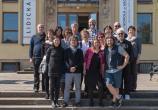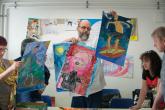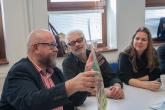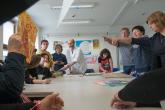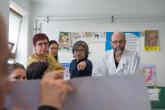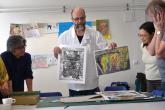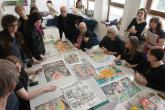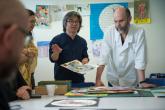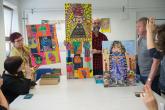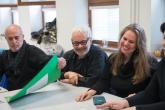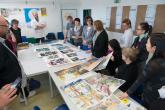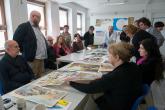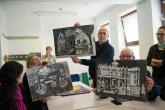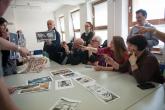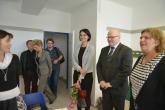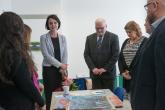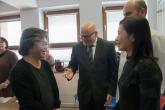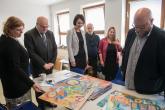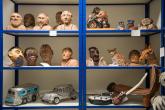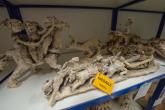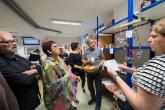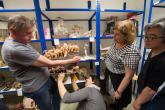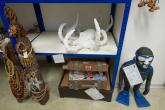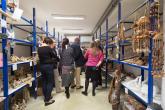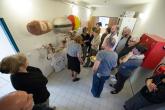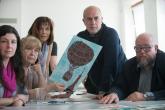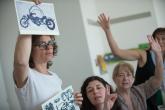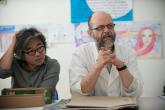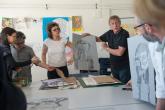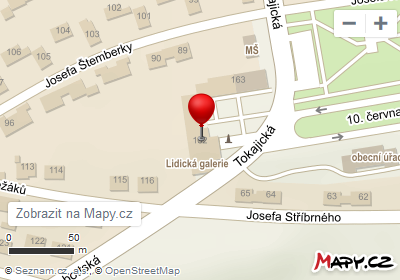Homepage » Archived editions » 45th edition » Panel of judges
Panel of judges
The expert panel of judges is made up of teachers of visual art branches at primary art schools and primary schools and of professional visual artists from Czech Republic and from abroad. The number of judges is not fixed, however, the panel has usually 13 - 25 judges. Many of them have engaged in the work with children for many years and also are judges in other art competitions which enhances their knowledge about the quality of art education of children in the schools in our country and abroad.
The panel of judges of the 45th ICEFA 2017 was held in two rounds: on 23 – 25 March (selecting works) and 30 March - 1 April 2017 (final awarding works) at the Lidice Gallery in Lidice.
Members of the 45. ICEFA 2017 panel of judges
Members of the panel of judges from Czech Republic
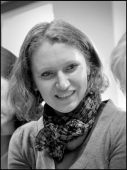
Jana Anděličová
teacher at Marie Podvalová Art School Prague 9 - Čakovice and Art School Štítného, Prague 3
1st round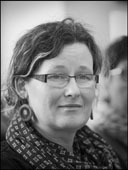
Eva Bartošová
teacher at Art School Nové Město pod Smrkem
1st round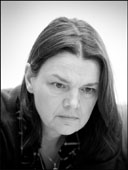
Ivana Erbenová
teacher at F. Kmoch Art School Kolín
1st round

Martin Homola
photographer, Buštěhrad
1st and 2nd round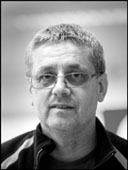
Vladimír Hrebeňák
teacher at Art School Karlovy Vary
1st round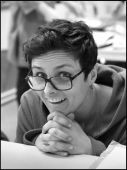
Ivana Junková
headmistress at Art School Řevnice
1st and 2nd round
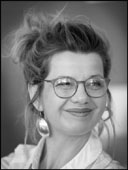
Kateřina Krutská Vrbová
teacher at Art School Řevnice, film editor
1st and a 2nd round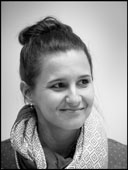
Karin Militká
head of the learning centre, Gallery of the Central Bohemian Region - GASK, Kutná Hora
1st round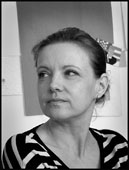
Romana Pavlíčková
headmistress at Art School Most, Moskevská
1st round

Pavel Rajdl
teacher at F. Kmoch Art School Kolín
2nd round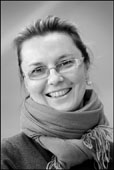
Ivana Schwarzová
teacher at Art School Strakonice
1st round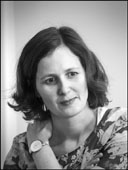
Martina Sumcová
teacher at Primary School Sedmikráska Rožnov pod Radhoštěm
1st round
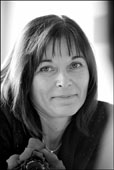
Romana Štajerová
teacher at Art School Plzeň, Jagellonská
1st and 2nd round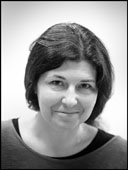
Dagmar Šubrtová
art director ICEFA Lidice, artist, Kladno
1st and 2nd round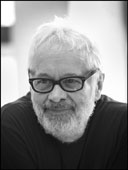
Robert Vano
photographer, Prague
2nd round
Members of Panel of Judges from abroad
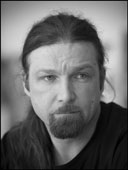
Tomáš Krivý
teacher at Považska Bystrica Art School, Slovakia
1st round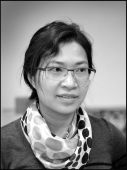
Iris Lau
the founder of the Gifted Artists Foundation, Hong Kong, China
2nd round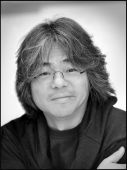
Henry Lau
the founder of the Gifted Artists Foundation, Hong Kong, China
2nd round
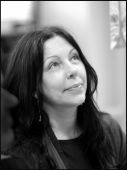
Renata Mečkovskiené
teacher at Art School Trakai, Lithuania
2nd round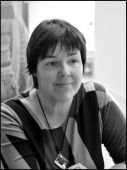
Ilze Rimicane
art director of Children’s and Youth’s Centre Daugmale, Riga, Latvia
2nd round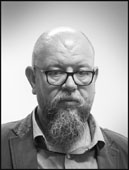
Vsevolod Romankov
teacher of art at School 1955, Moscow, Russia
2nd round
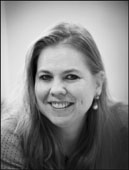
Debrah Sickler-Voigt
professor of art education, Middle Tennessee State University Murfreesboro, TN, USA
2nd round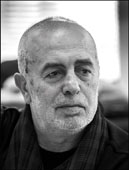
Ivan Stoyanov
visual artist, Nova Zagora, Bulgaria
2nd round
Report of the session of the expert panel of judges held on 23 – 25 March and 30 March – 1 April 2017 to evaluate the 45th ICEFA Lidice 2017
MEMBERS OF THE PANEL OF THE 45TH ICEFA LIDICE 2017
Chairman of the panel:
- Josef Zedník – visual artist, Olešná (1st and 2nd rounds)
Members of the panel:
- Jana Anděličová – teacher at Marie Podvalová Art School Prague 9 - Čakovice and Art School Štítného, Prague 3 (1st round)
- Eva Bartošová – teacher at Art School Nové Město pod Smrkem and Domov Raspenava (1st round)
- Ivana Erbanová – teacher at Art School Kolín (1st round)
- Martin Homola – photographer, Buštěhrad (1st and 2nd rounds)
- Vladimír Hrebeňák – teacher at Atr School Karlovy Vary (1st round)
- Ivana Junková – headmistress of Art School Řevnice (1st and 2nd rounds)
- Kateřina Krutská Vrbová – teacher at Art School Řevnice, film editor (1st and 2nd rounds)
- Karin Militká – head of GASK Learning Centre, Gallery of the Central Bohemian Region, Kutná Hora (1st round)
- Romana Pavlíčková – headmistress of Art School Most, Moskevská (1st round)
- Ivana Schwarzová – teacher at Art School Strakonice (1st round)
- Martina Sumcová – teacher at Art School Sedmikráska Rožnov pod Radhoštěm (1st round)
- Romana Štajerová – teacher at Art School Plzeň, Jagellonská (1st and 2nd rounds)
- Dagmar Šubrtová – art director at ICEFA Lidice, artist, Kladno (1st round)
- Pavel Rajdl – teacher at Art School Kolín (2nd round)
- Robert Vano – photographer, Prague (2nd round)
- Alena Zupková – teacher at Art School Háj ve Slezsku (1st and 2nd rounds)
Foreign members:
- Tomáš Krivý – teacher at Art School Považská Bystrica, Slovakia (1st round)
- Henry and Iris Lau – the founders of the Gifted Artists Foundation, Hong Kong, China (2nd round)
- Renata Mečkovskiené – teacher at Art School Trakai, Lithuania (2nd round)
- Ilze Rimicane – art director of Children’s and Youth’s Centre Daugmale, Riga, Latvia (2nd round)
- Debrah Sickler-Voigt – art teacher, Middle Tennessee State University Murfreesboro, TN, U.S.A.
- (2nd round)
- Vsevolod Romankov – art teacher, School 1188. Moscow, Russia (2nd round)
- Ivan Stoyanov – artist, Nova Zagora, Bulgaria (2nd round)
The United Nations declared 2017 the International Year of Sustainable Tourism for Development, which is why the jubilee 45th edition of the competition has been dedicated to the theme of TRAVEL. This year's edition saw 25,690 entrants from 83 countries, which makes it the 4th strongest edition in the past ten years. It is gratifying that the number of entrants has risen significantly (by 7,000) in comparison with last year and that some countries and schools have come back after several years' hiatus. It was apparent that this year's theme was attractive for the entrants for also this year saw new schools and organizations registered, partially thanks to the new category of film and animation.
This year again, the panel sat in two equal rounds; the first round saw 3,230 out of 25,690 entries pre-selected while the second one selected 1,258 entries for awards. At the end of the second round the judges agreed to award the Prize of the Panel of Judges to a foreign and a Czech school.
With children and young people familiar with the main theme, the judges together with the artists looked into space, flew, navigated and rode round the world, visited several continents, saw an infinite number of landscapes, got to know many cities, famous monuments and treasures of various cultures. There were travellers, pioneers and explorers there, the young artists presented journeys and journey experiences, means of transport, including cars, trains, ships and submarines, planes, helicopters, balloons, various hovercrafts and even time machines. They did not omit even animals that often have something to do with travelling – horses, donkeys and camels – and luggage and stuff we usually take with us while travelling – suitcases, backpacks, bags and travellers’ accessories, such as binoculars, compasses and maps. There were to be seen also galleries and journeys for art as well as virtual and introspective journeys.
The entries show not only an interest but also enjoyment the artists experienced in their work. Undoubtedly, the artists of all ages savoured and enjoyed their work properly. Large collections often indicate that whole schools, Czech or foreign ones, prepared for the exhibition and it should be emphasized that the quality of the collections has generally improved as compared with previous years. The teachers who thoughtfully assembled the collections deserve thanks and praise for good work.
As in previous years, however, there have been some entries with unsuitable make-up, exceeding the limits on dimensions, poorly labelled (without not only the date of birth but also the name of the artist) or made by artists older than allowed by the rules. Such entries have been disqualified from the competition.
Summary on entries
Number of entries in total: 25,690
Number of participating / awarded countries: 83 / 76
Number of participating / awarded organizations: 1,834 / 434
Number of newly registered schools: 540
Awards: Out of the total of 25,690 entries from 83 countries 1,289 have been awarded prizes including 2498medals (183 individual medals, 6 medals for children’s team work and 59 medals to schools for their collections).
Although the theme Travel was easily manageable, imposing no restrictions, offering many opportunities and appealing equally both to foreign schools, which usually employ more descriptive approach, and to Czech schools, which, by contrast, seek unusual points of view, the general outcome did not live up to the expectations of the panel of judges. So, this year's edition has not departed from previous years in any direction in terms of quality, perhaps only in the number of entries. An interesting enrichment of this edition is a larger number of 3D art objects, which show a significant improvement in quality not only with local schools but also with foreign ones; it has been also noted that the quality of prints is improving, which indicates growing interest in printmaking.
Besides 2D entries that come in great numbers, the panel expected a strong presence of photography, which is associated with travelling. However, this assumption proved false. The number of photographs has decreased for the second time in a row and their quality is often mediocre. So, the medal-winning entries, well appraised by both professional photographers among the members of the panel, stand out all the more among the entries. The photographers in the panel have agreed on what is important for a high rating of a photograph; it is the fact that the artist gets more than a description of reality, enriching it by an idea, a certain added value. Both professionals noted that the decisive moment is not whether the image is sharp or technically perfect or not, but it must not lack a drive, an idea and originality. What is an interesting and frequent phenomenon in this year's edition is the motive of railway lines, which are surely fascinating for children as a geometric element in a purely natural landscape.
Besides the traditional categories, a new category has been included this year – film and animation, which is expected to grow rapidly in the future thanks to ubiquitous digital technologies. This category is expected to give a chance to new schools or such ones that are stronger in this category than in the traditional ones – painting and drawing. (The success of films from Brazil and Mexico proved that to be true this year.) Saving money on postage costs may give another chance to the schools for which it is often postage costs that present a barrier to their participation – the films are sent in through uploads on YouTube.
Generally, it could be stated that the panel of judges has been gratified by the presented films and described their quality as fairly good. This year's edition received 112 films from 20 countries, out of which 29 came from Czechia and 5 from Slovakia. Such interest in the new medium has been a pleasant surprise for the panel. However, the quality of the films is uneven, for one thing, in the age of their makers, and for another, in the transparency of the teacher's approach. (In most cases, the films have been created without any guidance or the teacher does not have a grasp of film-making.) It is often just a case of moving pictures that do not meet the basic, simplest principles of film-making; moreover, the sound added to the film is often unsuitable, not corresponding to the footage.
The panel of judges sent to the second round the films in which they value authorial and original approach, use and exploitation of the chosen film language and its development as well as story adaptation technologies. What has been assessed about the films is the form of the narrative and the aesthetic quality (the artistic element of the film), visual and sound composition, whether these two parts co-operate to unfold the story, composition of shots, general stress on editorial and dramaturgical composition of the film, sticking to the genre throughout the narration, the rhythm of the film and, in the case of animated films, also the command of the animation technique. An important factor and an extra mile is a well pointed story following the traditional dramatic plot structure.
There are two schools to be commended for their film entries; they rise above the rest of the registered film entries, clearly showing the teacher's guidance. The schools are Sheepdog Animation School in Kitchener, Canada, and Vesnyanka from Dnieper, Ukraine. In total, the second round saw 11 films being awarded medals and honourable mentions. The non-winning films were ranked into the second and third categories – the second category was for the film entries appreciated for the exerted effort, visible and long-term work on the film and for meeting some of the criteria – aesthetic quality, partially developed story, an interesting theme, a try at a film speech, elements of animation, a try at editing, using audio effect in parts of the story etc. In most cases, however, film speech is missing, the sound used does not correspond to the theme, animation is deficient. The third category contains the film entries that do not meet the basic rules of film-making, are blurred, do not correspond to the theme, the scenes are out of focus, the aesthetic quality is low and the film-making skill was generally poor so that the entries could not even be called films or animations.
Summary on foreign entries (without Czechia and Slovakia)
Number of foreign entries: 17,188 (16,338 paintings and drawings, 501 photographs, 77 films, 271 3D art objects)
Number of participating countries: 81 (apart from Czechia and Slovakia)
Number of participating / awarded organizations: 1,316 / 254
Number of newly registered schools: 465
Awards: Foreign entries have won 531 prizes including 94 medals (72 medals to individuals, 1 medal for team works and 21 medals to schools for their collections).
This year's edition saw 17,188 entries by children from 81 countries (besides Czechia and Slovakia), which is 6,000 entries and 8 countries more than last year. We are very glad that, after a shorter or longer hiatus, some countries came back (Bahrain, Finland, France, Peru, Seychelles, South Africa, Tunisia, Turkmenistan, United Arab Emirates) and some new countries joined us (Ecuador, Palestine, Uruguay). This was helped partially by a questionnaire about non-participation, which had been sent out to the relevant schools. A large majority of schools said that the theme was unattractive to children (school, education) but now it is obvious that this year's theme was much more interesting for them.
The highest number of awards goes to children from Belarus, Bulgaria, China, Croatia, India, Iran, Latvia, Lithuania, Poland, Russia, Serbia, Slovenia, Thailand and Ukraine. Some other countries have been scantily represented again this year, often by only one school with several entries, which reduced chances for winning an award for them and made impossible for the panel to assess the artistic level of the country in a complex way (Argentina, Austria, Bahrain, Brunei, Cambodia, Cyprus, Ecuador, Finland, France, Greece, Italy, Japan, Kenya, Luxembourg, Malta, Pakistan, Philippines, Spain, Sweden, Switzerland, Tajikistan, United Kingdom, Uruguay, Vietnam, Zimbabwe).
As to the art techniques used in foreign entries, it could be stated that, as in previous years, the majority of foreign schools have sent in paintings and drawings. These entries show some differences in art expressions among continents, e.g. China ink contour drawing in China and Hong Kong, wax pastel drawings and decorativeness in Asian countries, however, we do not have sufficiently representative samples from individual countries to make an informed generalization. Entries in other media – photographs and films – have been sent in from a few countries only – Bosnia and Herzegovina (42 photos), Croatia as usual (107 photos), Canada (10 films), Russia (32 photos and 13 films) and Ukraine (122 photos and 22 films). However, painting has often been not very well mastered and is characterized by colourfulness for its own sake. On the other hand, there are some very good paintings and above all, prints, the amount and quality of which is growing. The panel was gratified by many good collections. It is worth mentioning e.g. the excellent collection of works from the studio Simply Art in Hong Kong, the collection of prints from primary schools in Cankova and Rogasovci (Slovenia), the collection of scratched and painted-over drawings from Krivoy Rog (Ukraine), the collection of paintings from the Princess Sirindhorn Art Center in Wangsaphong (Thailand), the collection of colour drawings from Torun (Poland), the good-quality collections of dry-point prints from schools in Magyarpolány (Hungaria) and Subotica (Serbia), the collection of watercolours from Tashkent (Uzbekistan) and the collection of watercolours awarded with the Prize of the Panel of Judges from the Moscow school 1955 (Russia).
Also this year many foreign schools (in contrast to the Czech and Slovak ones) tried to capture the theme in a descriptive way that was clearly discernible in most of the entries. As a rule, the schools worked with the description of reality, however, the form of their expression was not always well mastered from the artistic point of view, often due to a stubborn effort to make an attractive picture. Many artists tried to combine various art media unsuitably (collage, glitters, other decorative materials), thus producing an arguable result. This type of works often indicates a strong influence of the teacher since some collections contain entries very similar to each other. This does not hold true for all schools in all countries to the same extent, nevertheless, it can be said that this bad habit runs through all the collections. In spite of these shortcomings, the panel of judges often took into consideration a possible lack of systematic art education and perhaps a lack of material and technical equipment.
Also this year a strong connection has manifested itself between Czech artists living and working with children abroad and the competition – Czech teachers sent in the works of their little and not so little artists from nurseries in villages near Nazareth (Israel), the Czech School Melbourne (Australia), the Sheepdog Animation School in Kitchener (Canada), the Atelier Iva in Waldbredim (Luxembourg), the school Mateřídouška in Berlin (Germany), the Czech school in San Diego (U.S.A.), the school in Svatá Helena (Romania), J. A. Komenský bilingual gymnasium in Vienna (Austria), Grupo de Pintura Infantil de Verano on Lim (Peru) and the Czech Nursery in Thessaloniki (Greece).
What is interesting is also participation of studios and schools established and led by teachers from other countries – e.g. UMKA Bildungszentrum für Kinder in Wettingen (Switzerland), Szkolny Punkt Konsultacyjny w Mons in Shape (Belgium), Detskaya tvorcheskaya masterskaya in Orihuela (Spain), and Art Studija Vaivorykste in Paris (France). Also gratifying is the fact that thanks to co-operation with Czech embassies abroad, this year the competition was joined by schools from Ecuador and Uruguay (connected to Lidice by a monument commemorating the obliteration of the village in the Uruguayan town of Canelones) and the organization 4Homes for handicapped children from Palestine. It is the participation of the children from Palestine what testifies to growing participation of handicapped entrants. However, it is necessary to note that such entries need to be visibly marked for it is very difficult for the organizers to find out that the school is "special" just from its name, which is often given in a foreign language.
It is evident that Lidice and the competition appeal to more and more schools and countries year by year.
Summary on Czech entries:
Number of entries: 5,932 (4,909 paintings, 268 photos, 29 films a 726 3D art objects)
Number of participants: 386 (35 nurseries, 113 first-level schools, 106 art schools, 28 special schools, 33 hobby groups and child and youth centres, 20 secondary schools, 51 individuals)
Number of awarded organizations: 127 (10 nurseries, 17 primary schools, 32 art schools, 12 special schools, 11 hobby groups and child and youth centres, 2 secondary schools, 13 individuals)
Number of newly registered schools: 61
Awards: Czech entries have won 620 prizes including 127 medals (91 medals to individuals, 5 medal for team work and 31 medals to schools for their collections).
Generally, it could be said that in comparison to foreign schools, Czech and Slovak schools usually do not limit themselves to a descriptive representation of the theme, rather, they are inclined to a deeper exploration and seeking connections. Also there is a wide scope of employed art techniques that are not usual in foreign entries. Czech art schools work skilfully with difficult art techniques including all types of printmaking. It definitely shows the knowledgeability of the art teachers, who continue European traditions of art perception and European vehicles of expression. Generally it can be stated, however, that the quality in first-level schools is rising; good collections from larger art schools in the competition are commonplace nowadays, but even smaller schools do not lag behind. It becomes apparent that good-quality results do not depend on the size of the school but, above all, on the systematic and good work of the teacher. It can be stated that compared to foreign participants, children from Czech schools do not get stuck at the initial stereotypes, rather, they try to get the most of the theme. In connection with the wide expansion on the theme, however, a debate developed in some cases over a bit too remote relation to the theme (e.g. the collection of animals and manhole covers that appeared both in the theme of School and in the theme of Travel, so the question arises how to keep the variety of views in balance with transparency of the theme).
It is due again this year to commend the work of art schools; many of them have been keeping a high standard of their entries for many years. Very good collections of paintings, drawings and prints came from the art schools Český Krumlov, Háj ve Slezsku, Jeseník, Jilemnice, Kroměříž, Most (Moskevská st.), Nové Město pod Smrkem, Olomouc, Plzeň (Jagelonská and T. Brzkové streets), Prague 9 Prosek, Prostějov, Řevnice, Strakonice and Šternberk, interesting collections of photographs came from the art schools Mladá Boleslav, and Plzeň (Jagellonská st.) and Řevnice. This year saw a greater variety and a higher quality in 3D art objects than previous years, with the most beautiful collections coming from the Art School Český Krumlov (a collection of explorers), Art School Kolín, art School Most Moskevská (sailors and water containers), Art School Postoloprty, Art School Prostějov (a sprightly group of tour participants), Art School Mladá Boleslav (really artistic collection "from Amazon"), Art School Řevnice, Art School Strakonice (large paper-mache items).
The Czech first-level schools are well represented this year by collections of entries from the schools Červené Pečky (collections of prints and 3D objects), Malecí (a collection of photos), T.G. Masaryk School Opava (collections of prints and photographs) and the school Sedmikráska in Rožnov pod Radhoštěm (collections of photos and art objects with a bus standing out among them on which the graphic design of the 45th edition has been based). The category of special schools can boast with a highly valued collections from the Nursery School Brno Ibsenova street, the Practical School Brno Vídeňská street, Centrum Arpida České Budějovice and Domov Raspenava, outstanding from among hobby groups and children and youth centres are collections from Výtvarné Dílny Vinohrady Prague 2 (a collection of 3D art objects) and the category of secondary schools is well represented by Gymnasium Krnov (a collection of dry-point prints).
Summary on the Slovak entries:
Number of entries: 2,570 (2,468 paintings, 54 photographs, 5 films, 43 3D art objects)
Number of participating schools: 132 (10 nurseries, 24 first-level schools, 77 art schools, 12 special schools, 3 hobby groups and child and youth centres, 1 secondary school, 5 individuals)
Number of awarded schools: 53 (3 nurseries, 9 first-level schools, 33 art schools, 4 special schools, 3 hobby group and child and youth centres and 1 individual)
Number of newly registered schools: 14
Awards: The assessed entries have won 138 awards including 27 medals (20 individual medals and 7 medals to schools for their collections).
Among the Slovak schools the most interesting are collections from the Private First-level School Galileo in Bratislava (a well-rounded collection of colour mixed media items), Art School Holíč, P. Mudroň Art School Martin, Ladislav Stanček Art School Prievidza (a collection of prints), Art School Spišská Belá (a collection of prints). The panel of judges was amused by a funny set of small mixed media items by the citizens' association SLNEČNICE from Bratislava featuring the theme of celebrities coming together in a train compartment.
Prize of the Panel of Judges
The prize of the Panel of Judges goes to the School 1955 in Moscow, Russia, which sends in regularly even and unique collections of areal entries. Watercolours of such quality are hardly to be seen elsewhere. The Prize of the Panel of Judges for a Czech School for outstanding and systematic work with children has been awarded to the Art School Nové Město pod Smrkem for its rich collection of areal works. The above-mentioned art school has been regularly sending in high-quality collections for many years and the works of its students are considered the gems of the exhibition. The results of this school testify to the fact that not only large schools but also the small ones can put together an amazing collection.
Conclusion
Every year the international panel of judges faces a challenge. It is very difficult to find and award the most interesting entries among so many. At the same time, it is not possible to award all registered entries. Hopefully, the highest enjoyment and the best experience comes from the work itself – the creative work at school or at home. After all, the enthusiasm and emotion associated with travelling can be found again, seen and experienced repeatedly while working, which holds true also for the panel of judges assessing the entries. Our thanks go to all who joined the competition, who drew, painted printed, made a photo of, modelled or filmed their idea regarding the given theme and sent it in. After all, what is a competition without competitors? So, with the assistance of all of you, this year's exhibition will be unique again. Our thanks go also to all teachers, children's guides through the world of art, who, together with their pupils, prepared sensitive and interesting collections of works. We believe that also for them working together with children was a great experience.
This year more than ever, the benefit of the international make-up of the panel was felt, with its specifics arising from cultural and social backgrounds of each individual in the panel as well as from approaches to art education employed in each respective country. At the same time, each member of the panel has been enriched by the art perception of the others and can better understand the context in which entries coming from a certain country were created. It becomes apparent that this way the members of the panel can get to understand different aesthetics of children's work but also influence and enrich the artistic expression in their own country, passing on their own experience (perhaps by publishing articles in art periodicals or by lecturing for students of aesthetic education). As all members of the panel can appreciate this, their special thanks belong to the curator of the exhibition, Ms. Kasalická, who selected the team and welded it together with her personality.
Invaluable, exacting and perfect work in registering entries and organizing both sessions of the international panel was done by the staff of the Lidice Memorial without which the work of the panel would be inconceivable, including comfortable and pleasant services that made possible for the panel to concentrate on their work without any disruptive influences. The panel of judges would like to thank ICEFA Curator for having arranged an opportunity to meet Ms. Marie Šupíková, who, as one of the few Lidice children, survived the tragic events of 10 June 1942. Thus, through her emotional recounting, the members of the panel could at least partially realize the profoundness of the tragedy that Lidice experienced and that should never be forgotten.
Ivona Kasalická – Head of the Lidice Gallery and Curator of ICEFA Lidice
Romana Štajerová, a member of the 45th ICEFA Lidice Panel of Judges
Josef Zedník, Chairman of the 45th ICEFA Lidice Panel of Judges
Portraits of jury members and photos from the jury: © Martin Homola

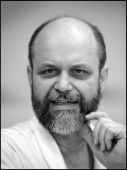
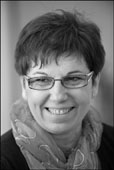
m.jpg)
m.jpg)
---zmm.jpg)
m.jpg)
-zmm.jpg)
m.jpg)
m.jpg)
m.jpg)
m.jpg)
m.jpg)
m.jpg)
m.jpg)
m.jpg)
m.jpg)
m.jpg)
m.jpg)
